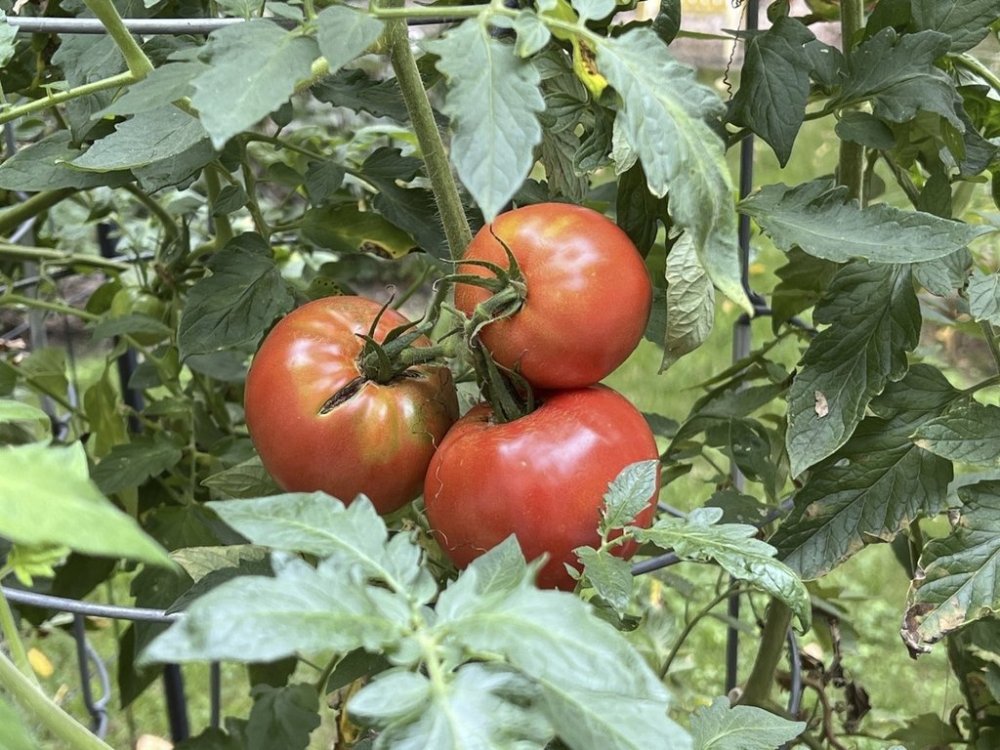How to tell when your garden veggies are ripe for harvesting
Advertisement
Read this article for free:
or
Already have an account? Log in here »
To continue reading, please subscribe:
Monthly Digital Subscription
$1 per week for 24 weeks*
- Enjoy unlimited reading on winnipegfreepress.com
- Read the E-Edition, our digital replica newspaper
- Access News Break, our award-winning app
- Play interactive puzzles
*Billed as $4.00 plus GST every four weeks. After 24 weeks, price increases to the regular rate of $19.00 plus GST every four weeks. Offer available to new and qualified returning subscribers only. Cancel any time.
Monthly Digital Subscription
$4.75/week*
- Enjoy unlimited reading on winnipegfreepress.com
- Read the E-Edition, our digital replica newspaper
- Access News Break, our award-winning app
- Play interactive puzzles
*Billed as $19 plus GST every four weeks. Cancel any time.
To continue reading, please subscribe:
Add Free Press access to your Brandon Sun subscription for only an additional
$1 for the first 4 weeks*
*Your next subscription payment will increase by $1.00 and you will be charged $16.99 plus GST for four weeks. After four weeks, your payment will increase to $23.99 plus GST every four weeks.
Read unlimited articles for free today:
or
Already have an account? Log in here »
It’s time — or getting to be time — for us gardeners to reap what we’ve sown.
Although it’s fairly evident when some edibles, like tomatoes, are ripe for the picking (uniform red, yellow or orange color), that isn’t the case with every crop.
Popular crops’ telltale signs of deliciousness

Zucchini, for instance, doesn’t change color. Although it might be tempting to grow a 15-inch-long squash, it will likely be tough. For optimal tenderness, pick individual fruits when they’re 6-8 inches (15-20 centimeters) long.
All varieties of green beans should be harvested when they are about as thick as a pencil. Once the plant begins producing, check it every day or two and remove beans that are ready; the more you pick, the more the plant will make.
Green peppers can be harvested at any size but are considered fully mature when they turn red. As a bonus, red peppers are sweeter and contain more nutrients.
There isn’t such a thing as an unripe cucumber — even small ones are crispy and juicy. The hazard here is allowing them to remain on the vine too long, which can result in an off-putting taste and texture. Cucumbers are considered mature when their bumpy skin smooths out.
You’ll know sweet corn is ready as soon as the silk at the top of its ear turns brown. If you still aren’t sure, peel back a small portion of husk and press your nail into a kernel; if it releases a milky fluid, it’s ripe.
Cantaloupe will practically harvest itself when the time is right: A light tug will release the melon from its stem. If any force is required, it’s not ready.
Honeydew melons are ripe when their bottoms begin to soften, and watermelons when their undersides turn a creamy white color.
When to unearth root crops
Determining when to dig up root crops can pose a bit more of a challenge, as they can’t be visually assessed without disturbing them. But there are some signs to watch for.
You’ll know garlic bulbs are mature when all but five leaves at the top of the plant have turned completely yellow or brown.
Onions are ready when their tops flop over and turn brown.
To assess beets, select one plant and push aside the soil at its base to expose the entire top of the root. Harvest when it measures between 1 1/2 and 3 inches (3.8 and 5 centimeters) wide, depending on variety. If it’s too small, cover it back up, water and try again in a week. Avoid allowing beets to get too big, however, or they’ll lose sweetness and turn tough.
Standard potatoes are fully mature when their foliage dies back. But if it’s the so-called “new” potatoes you’re after, dig up the thin-skinned babies 2-3 weeks after the plant blooms. Early-maturing potato types will be ready sooner than the standard, so check tags for variety-specific details. (Note: Due to their delicate skin, new potatoes should be consumed immediately, as they do not store well.)
Carrots are ready when they poke up from underground but can be left in the soil, even into winter, until you need them.
___
Jessica Damiano writes weekly gardening columns for the AP and publishes the award-winning Weekly Dirt Newsletter. You can sign up here for weekly gardening tips and advice.
___
For more AP gardening stories, go to https://apnews.com/hub/gardening.


